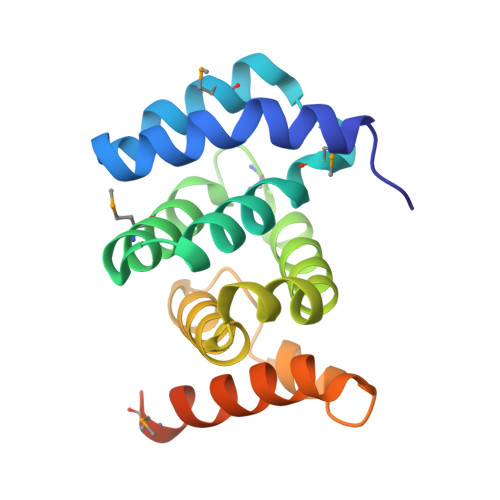PDCD4 inhibits translation initiation by binding to eIF4A using both its MA3 domains.
Suzuki, C., Garces, R.G., Edmonds, K.A., Hiller, S., Hyberts, S.G., Marintchev, A., Wagner, G.(2008) Proc Natl Acad Sci U S A 105: 3274-3279
- PubMed: 18296639
- DOI: https://doi.org/10.1073/pnas.0712235105
- Primary Citation of Related Structures:
2RG8 - PubMed Abstract:
Programmed Cell Death 4 (PDCD4) is a protein known to bind eukaryotic initiation factor 4A (eIF4A), inhibit translation initiation, and act as a tumor suppressor. PDCD4 contains two C-terminal MA3 domains, which are thought to be responsible for its inhibitory function. Here, we analyze the structures and inhibitory functions of these two PDCD4 MA3 domains by x-ray crystallography, NMR, and surface plasmon resonance. We show that both MA3 domains are structurally and functionally very similar and bind specifically to the eIF4A N-terminal domain (eIF4A-NTD) using similar binding interfaces. We found that the PDCD4 MA3 domains compete with the eIF4G MA3 domain and RNA for eIF4A binding. Our data provide evidence that PDCD4 inhibits translation initiation by displacing eIF4G and RNA from eIF4A. The PDCD4 MA3 domains act synergistically to form a tighter and more stable complex with eIF4A, which explains the need for two tandem MA3 domains.
Organizational Affiliation:
Department of Biological Chemistry and Molecular Pharmacology, Harvard Medical School, Boston, MA 02115, USA.

















